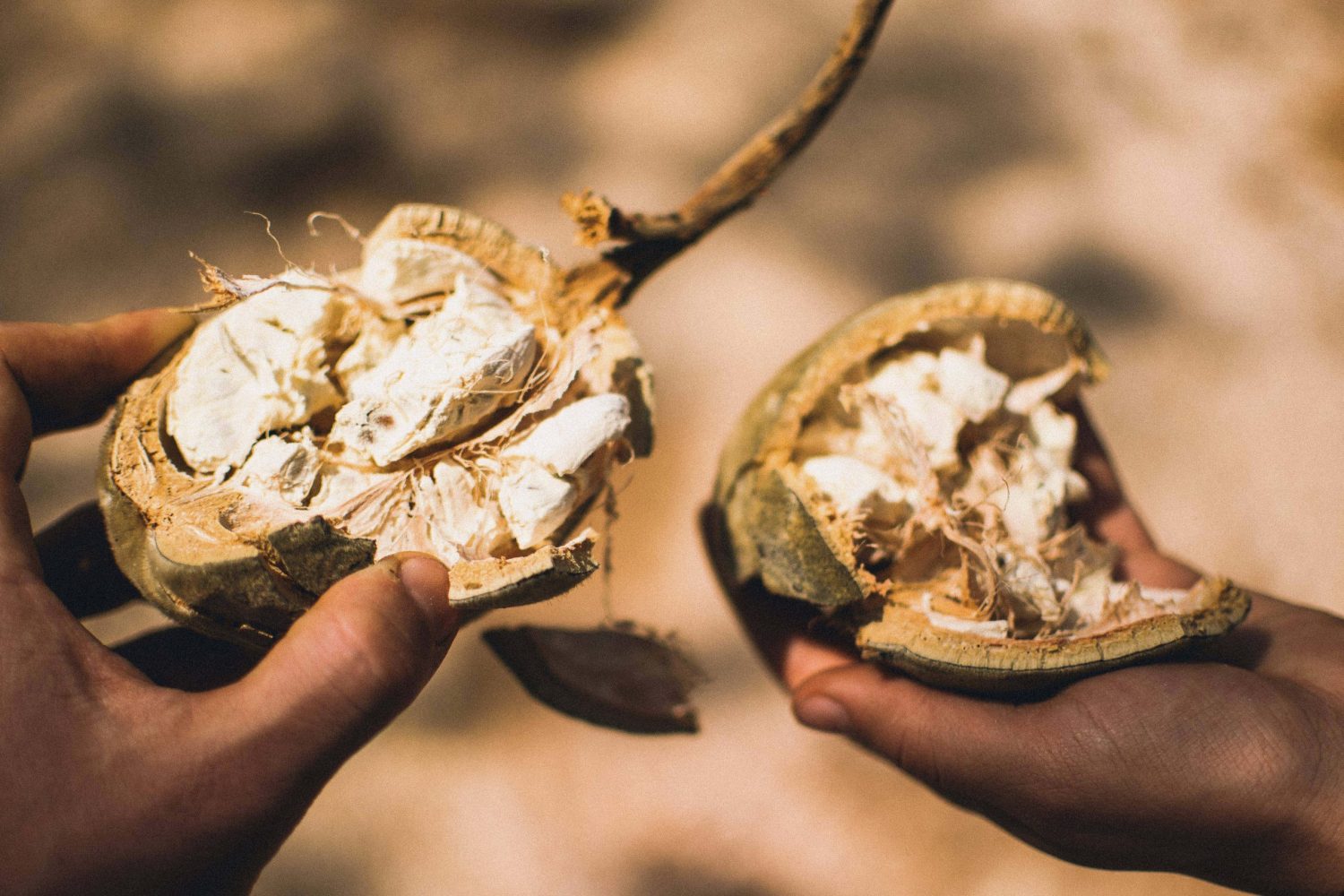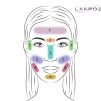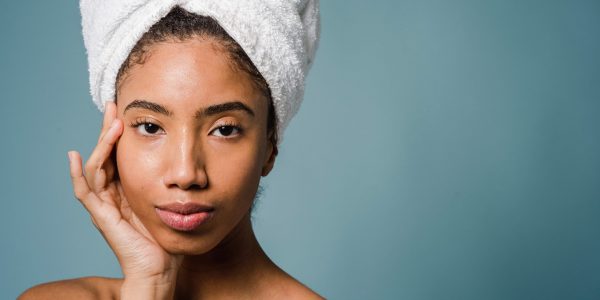
Africa is just full of plant species with wide-ranging and often unexpected benefits! And it is no longer rare to see her plants or the fruits of her trees used in our daily lives. Among the trees renowned for their numerous benefits is the baobab, one of Africa’s most iconic plant species.
All about the baobab
The baobab is the emblem of Senegal. It is also famous as a banyan tree, that is, where people meet to chat, to discuss their society, talk about village life, and storytelling for children. So, it’s truly a sin to cut one down. The baobab is instantly recognisable thanks to its thick, grey trunk and its branches in the form of a crown. It’s a huge tree, often reaching up to 25m tall and some 20m around its trunk. The diameter of its trunk regularly reaches 5 to 7 meters.
During the rainy season, a baobab can absorb up to 140,000 litres of water to store for the dry season. And they can live for up to 2,000 years!
Each fruit weighs around 250g. These oval-shaped fruits can reach up to 30cm in length. They are mature once the skin changes from green to beige. The pods contain edible seeds known as “monkey-bread”, and one tree can produce up to 200 fruit per year.
The baobab is also known as the “upside-down” tree. That’s because without its leaves it looks like its roots are at the top. Legend has it that the baobab originally grew the right way up and considered itself a cut above all the other trees. To make it swallow its pride, the gods uprooted it and planted it upside-down to teach it some humility and there it stayed!
Baobab’s medicinal benefits…
Some parts of the baobab, like the fruit and bark have numerous medicinal benefits. Baobab fruit are packed with vitamins, with a high concentration of vitamin C, calcium, potassium and antioxidants. They are also full of iron, fibre and minerals that are great for our bodies. Powdered monkey-bread is used as a remedy for exhaustion. It aids recovery after illness like flu, or after sports. It also has strong anti-inflammatory properties and helps fight joint pain and other inflammations. Finally, this powder promotes digestive health and protects the liver. Baobab bark is also used medicinally as an infusion to fight malaria and fever.
…and what about baobab’s cosmetic benefits?
The antioxidant power of baobab pulp is four times more powerful than that of kiwi fruit. These antioxidants protect your skin from ageing and have regenerative properties. Applied as a face mask, baobab powder helps to hydrate and smooth skin. Finally, the rich vitamin B2 content helps to heal tissue.
Baobab can be used as a powder, but also as an oil, and baobab’s properties add real benefits to cosmetics. That’s why it is one of Lakroz’s favourite raw ingredients and we make full use of it. The fatty acids present in the baobab oil contribute to skin renewal. It also helps you deeply hydrate and nourish your skin.
You can find baobab oil in our Lisse Pureté exfoliating body scrub and our Caresse Nourrissante body cream. We combine it with shea butter and desert date oil. Together, these three ingredients will leave your skin hydrated, soft and protected.








